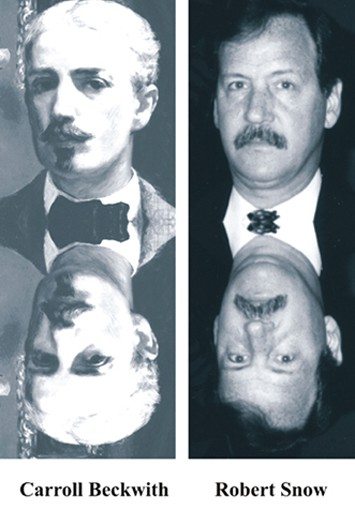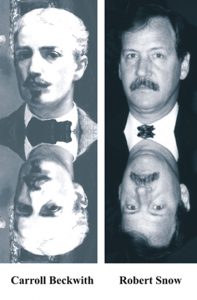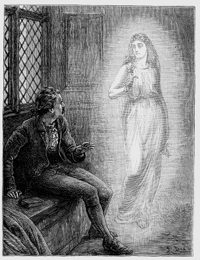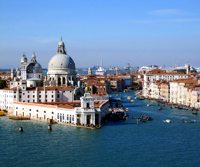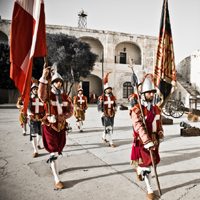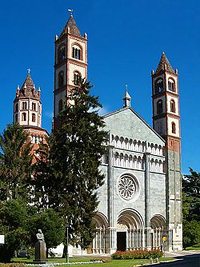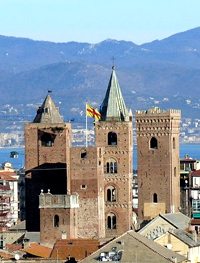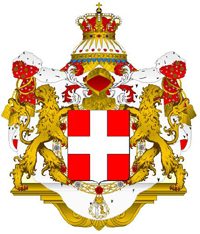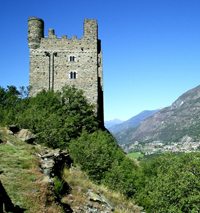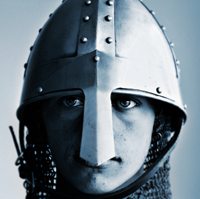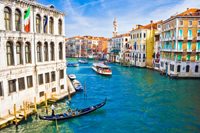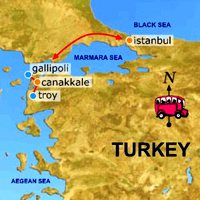How Derived: Past Life Regression
Researcher: Robert Snow
From: Portrait of a Past-Life Skeptic: The True Story of a Police Detective’s Reincarnation
Article from: Born Again: Reincarnation Cases Involving Evidence of Past Lives with Xenoglossy Cases Researched by Ian Stevenson, by Walter Semkiw, MD
Captain Robert Snow Goes to for a Past Life Regression on a Dare
Robert Snow is a retired Captain of the Indianapolis Metropolitan Police Department, who in his career was in charge of the department of the Homicide and Robbery and the department of Organized Crime. He has written numerous books on police work. In addition, Captain Snow has written a book called Looking for Carroll Beckwith, Portrait of a Past Life Detective, which documents his reincarnation case in detail. A summary is provided below.
Bob’s story begins at a party, where a police psychologist, who had conducted past life regressions as a hobby, was describing how she would guide clients into a relaxed state so that past life memories could emerge. Captain Snow thought that these so-called memories must be fabricated, that they were fantasies, and he told this to the regression therapist.
Incensed, the psychologist dared Captain Snow to have a past life regression himself. Snow said, “Sure, I’ll do it,” though he really had no intention of following through.
The regression therapist, though, kept hounding Snow and even accused him of being “scared.” That did it and reluctantly, Captain Snow got a referral for a different regression therapist and scheduled an appointment. He decided to have the regression only so it wouldn’t look like he had “welshed on the dare.” Snow did not believe in reincarnation and did not expect to have a meaningful experience during the session.
A delightful aspect of Bob’s book is the high level of skepticism and a mischievous sense of humor that infuses the narrative. Let us share in Captain Snow’s experiences through the following passages from Looking for Carroll Beckwith. We start with the regression therapist, Dr. Mariellen Griffith, guiding the regression. Dr. Griffith begins by instructing Snow to imagine that he is relaxing comfortably in his den at home. The narrative from Captain Snow’s book follows:
“’Now, picture your higher self coming into the room to greet you,’ Dr Griffith said.
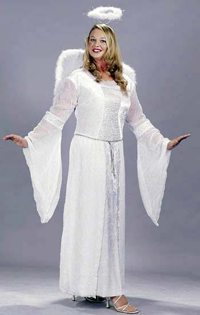 I did that, too, though as I sat on the couch with my eyes closed, I couldn’t help but wonder what the hell I was doing there, particularly with she asked me what my higher self was wearing. How the hell would I know? This was her daydream. But I decided to give it a try.
I did that, too, though as I sat on the couch with my eyes closed, I couldn’t help but wonder what the hell I was doing there, particularly with she asked me what my higher self was wearing. How the hell would I know? This was her daydream. But I decided to give it a try.
‘White,’ I answered, ‘A long white gown. Wasn’t that what all spirits wore?’
‘Your higher self is standing there and asking if you’re ready to go on a trip. It is telling you that it will guide you and protect you on your trip.’
‘Oh Lord, I thought, as I tried to maintain a facial expression of seriousness, I can’t believe I’m doing this.'” (1)
Robert Snow’s Unexpected Past Life Memories are More Real than Waking Consciousness
Eventually and much to his shock, Captain Snow experienced powerful and very clear past-life memories during the regression. Captain Snow has related that his perception of the past-life events were more clear than waking consciousness. He recalled several different lifetimes, but the one that was most prominent was as a portrait painter in what seemed to be the 19th century. Captain Snow remembered 30 specific details regarding this lifetime as an artist.
One very clear memory involved him painting a portrait of a hunchback woman. Captain Snow vividly remembered the experience, of the paint strokes that were used to create that painting, and even of his questioning of why someone with a pronounced deformity would want a portrait. A summary of the most specific regression memories is provided below:Reincarnation Case of Robert Snow & The Hunchback Woman
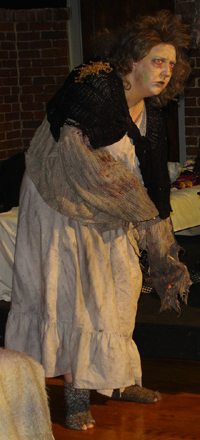 1. He painted a portrait of a hunchbacked woman
1. He painted a portrait of a hunchbacked woman
2. He painted portraits to make money but hated painting portrait
3. He used the name “Jack”
4. He used a walking stick
5. His wife and he spent time in France
6. His wife could not have children
7. They were desperate for money and he argued with his wife about money
8. Despite their problems with money and inability to have children, their marriage was happy
9. He had an art studio with a bank of skylight and a row of windows
10. He once stayed at an estate with large gardens
11. A female relative died of a blood clot
12. He died in a large city with tall buildings in the fall of the year 1917
The regression had such a profound effect on Captain Snow that he became obsessed with trying to determine whether it was authentic. Captain Snow himself still did not believe in reincarnation and operated under the assumption that he had learned about the portrait painter in the past, through a book, in school or at a museum, and that the regression experience represented a forgotten memory that had surfaced.
Police Captain Robert Snow Investigates a Past Lifetime as the Painter of the Hunchback Woman Portrait
Snow investigated the regression experience as he would a police case. He methodically examined art books, visited art galleries and contacted art dealers, searching for the portrait of the hunchback woman he had seen in the regression, or to find some other clue. Captain Snow was unable, though, to identify any historical artist consistent with the regression persona.
Snow is an experienced researcher, having written six books on police management and other police topics. He is also highly intelligent; he scored straight A’s in college and earned a full scholarship for a doctorate program in psychology. Nonetheless, after a year of trying to find the portrait of the hunchback woman, he came to a dead-end. He concluded that it was unlikely that he would ever be able to identify the artist seen during his regression.
Spirit Being or Soul Guidance: Captain Robert Snow Finds the Hunchback Woman in New Orleans
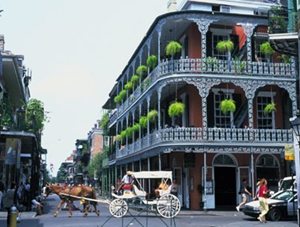 At that point in time, Captain Snow’s wife, Melanie, suggested that they take a vacation trip to New Orleans to celebrate their anniversary. Bob agreed.
At that point in time, Captain Snow’s wife, Melanie, suggested that they take a vacation trip to New Orleans to celebrate their anniversary. Bob agreed.
On the last day of their trip, Bob wandered into an art gallery in the French Quarter of New Orleans. Here, he had another profound experience. This incident demonstrates how people can be guided, apparently by spiritual sources, in discovering past lives. In the gallery which Captain Snow had walked into by apparent “chance,” he discovered the portrait of the hunchbacked woman he had seen in his regression. Captain Snow describes the scene:
“Whirling around, I stared open-mouthed at the portrait, reliving an experience I’d had once when I grabbed onto a live wire without knowing it, the current freezing me in my tracks as huge voltage surged up and down my arms and legs . . .
 For the next several minutes, I didn’t move from in front of the portrait, but instead continued closing my eyes to see again and again the scene of me painting this very portrait in my studio, and then opening my eyes to see the actual finished portrait. The situation began to feel surreal, more like a very vivid dream that you wake up sweating from, a dream that you have to keep telling yourself over and over again was only a dream. It wasn’t real.
For the next several minutes, I didn’t move from in front of the portrait, but instead continued closing my eyes to see again and again the scene of me painting this very portrait in my studio, and then opening my eyes to see the actual finished portrait. The situation began to feel surreal, more like a very vivid dream that you wake up sweating from, a dream that you have to keep telling yourself over and over again was only a dream. It wasn’t real.
Bob wonders if He has had a Stroke
Finally, even though I knew with absolute certainty that this was the same painting I had seen while under hypnosis, I convinced myself that stumbling onto it by accident like this was simply too bizarre to be true. I toyed with the idea for a few moments that perhaps I’d had some kind of stroke and just thought I stood in front of this portrait, when in actuality I was in a hospital bed somewhere or maybe even in a nursing home.
After giving this possibility a few moments’ consideration, I realized how very desperate I had become to find a rational answer for what was happening. But desperate or not, things like this just didn’t happen in real life. What were the chances, after all the months of systematic searching, that I would just happen onto the painting like this? What were the chances that Melanie would just happen to want to go to New Orleans, and that we would just happen to visit this gallery, just when they happened to have this painting for sale? ..
During my 30 years as a police officer, I have always searched for the truth. Sometimes the truth didn’t turn out to be what I expected, but still, the truth was what I had always searched for. And now, here I was seeming to be facing the truth I had been looking for, but at the same time trying to deny it, trying to find any way to deny the truth of what I had found. . . . Supernatural things didn’t happen to real people. Maybe they did in the movies, but not in real life.” (2)
From the portrait, Snow learned that the painter’s name was J. Carroll Beckwith. Snow’s rational side then took over again. He reasoned that he may still have seen this portrait of the hunchback woman at a museum or at an exhibit. He asked the gallery worker if this was possible. Snow describes the response.
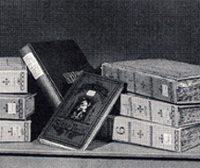 “No,” the man said giving his head a slight shake, “you haven’t seen this work before. This portrait has been in private hands for years. And besides, let me be honest with you, I don’t think there has been an exhibition of Beckwith’s work in the last 75 years. He wasn’t that famous.” (3)
“No,” the man said giving his head a slight shake, “you haven’t seen this work before. This portrait has been in private hands for years. And besides, let me be honest with you, I don’t think there has been an exhibition of Beckwith’s work in the last 75 years. He wasn’t that famous.” (3)
Spirit Being or Soul Guidance
Please note that it is likely that Captain Snow did not find the portrait of the hunchback woman by chance or accident. Rather, I believe that a spirit being or Bob Snow’s own soul sent a telepathic message to his wife, Melanie, to go to New Orleans. Similarly, once in New Orleans, I posit that a spirit being or Bob’s own soul telepathically led him to the art gallery so that he would find the portrait of the hunchback woman, which, as described below, was the key to solving his reincarnation case. As such, a spirit being or Bob’s own soul was responsible for making this past life identification.
Captain Snow Finds his Past Life Portrait Painter’s Diary
Snow later found that Beckwith’s last exhibition was in 1911, well before Snow was even born. Snow also found that though Beckwith wasn’t a famous artist, he was a good administrator, as is Bob. Beckwith became the President of the National Academy of Design, in New York. The Academy had kept Beckwith’s diaries, as well as an unpublished autobiography.
From Beckwith’s diary and autobiography, Snow was eventually able to validate all thirty of the specific memories from his regression, including the twelve specific items listed above.
Though initially reluctant to accept reincarnation as the basis for his regression experience, Captain Snow finally came to the conclusion that he had been Carroll Beckwith, who had indeed used the name Jack, in a prior lifetime. He has stated that he has proven reincarnation and that if this were a police case, the evidence he compiled would stand up in court and that no plea-bargaining would be entertained.
Captain Snow Doesn’t Realize there is a Past Life Physical Resemblance
Interestingly, Captain Snow was not aware of a physical resemblance that exists between himself and Carroll Beckwith. When I met first Captain Snow at a meeting of the International Association for Regression Research and Therapies (IARRT) in September 2000, I offered to take his picture and compare it with Beckwith’s. I knew from experience that these comparisons are best done by lining up images side by side in the same pose.
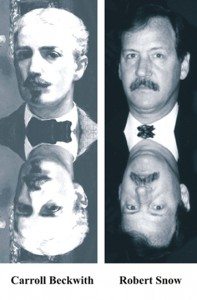 In the image comparison, Beckwith is on the left side and Captain Snow is on the right side. Though Captain Snow is a bit older and heavier in the photograph than Beckwith was at the time of the portrait, facial architecture is very similar between the two. Both even chose to maintain a similar mustache.
In the image comparison, Beckwith is on the left side and Captain Snow is on the right side. Though Captain Snow is a bit older and heavier in the photograph than Beckwith was at the time of the portrait, facial architecture is very similar between the two. Both even chose to maintain a similar mustache.
Captain Snow’s case demonstrates a characteristic phenomenon that occurs when one becomes concretely aware of a specific past lifetime. The past-life information often triggers a traumatic reaction in a person, followed by a period of integration. When one faces the reality of reincarnation, a reevaluation of how one views the world is required.
Over a lifetime, we all develop a unique way of understanding the world. That belief system may involve a spiritual aspect to life, or an atheistic view may be held. We usually come to our philosophical understanding of the world in our twenties and we generally are resistant to changing our point of view.
Evidence of Reincarnation can be Disturbing
Regardless of what one’s belief system is, concrete evidence of reincarnation demands an alteration of one’s belief system. Even if one already believes in reincarnation, the shift from a belief in past lives to becoming aware of objective evidence of reincarnation can be a shock.
Recall that Captain Snow did not believe in reincarnation at the time of his regression and that following his past-life experience, he tried to find a logical explanation for his memories. Even after stumbling into the portrait of the hunchback woman in the art gallery in New Orleans, Captain Snow still explored the possibility that Beckwith’s work had been displayed in a museum and that at some point in his lifetime he had viewed it.
Snow was falling back on the theory that his regression experience represented repressed memories from his current lifetime. Let us revisit Captain Snow’s reaction when the gallery salesman in New Orleans told him that he could not have previously seen the portrait of the hunchback in a museum or exhibit. Snow explains:
“As the gallery worker’s answer dashed my seemingly logical explanation for what had happened, the vertigo returned. My whole belief system was not only teetering. It was falling. Everything around me had such a surrealistic feeling to it that I could have been in a Kafka novel. And so I simply stood there open-mouthed, feeling numb and detached from reality.”
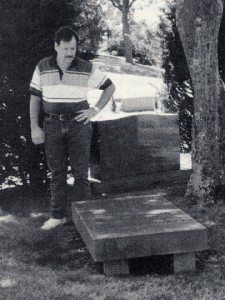 We will collectively need to adjust our belief systems as objective evidence of reincarnation comes into the world. Overall, the news is good, but it takes some getting used to.
We will collectively need to adjust our belief systems as objective evidence of reincarnation comes into the world. Overall, the news is good, but it takes some getting used to.
Captain Snow’s Knee Shakes when He visits his Own Past Life Grave
In the image provided to the right, Robert Snow visits the grave of Carroll Beckwith, that is, Snow is visiting his own grave from a past lifetime. Snow writes in his book that at Beckwith’s grave, his left knee started to shake uncontrollably and he became drenched in sweat, much like when he was a rookie cop in a life threatening situation. Snow has mused that in the line of duty, he has been shot at and suspects have tried to stab him, but nothing has unnerved him as much as discovering a past lifetime.
View a Video of Robert Snow telling his Story in a Hilarious Manner: Robert Snow Video
Principles of Reincarnation & Understanding Past Lives
Physical Resemblance: Even though Robert Snow at first didn’t realize there was a resemblance between him and Beckwith, a resemblance does exist.
Spirit Being or Soul Guidance: The breakthrough in validating this reincarnation case came when Captain Snow found the portrait of the hunchback woman in New Orleans. It is my contention that this did not happen by coincidence but rather, that Bob was lead to the painting through guidance by spirit beings.
It is likely that a spirit being or Robert Snow’s own soul telepathically inserted the thought into his wife’s mind that they should visit New Orleans for their anniversary. Once in New Orleans, Bob was intuitively guided to the art gallery where he found the portrait of the hunchback woman.
From the portrait, he learned the name of the artist, Carroll Beckwith, and he then was able to find Beckwith’s diary, which allowed him to validate his past lifetime as Beckwith. Many reincarnation cases feature such apparent guidance by spirit beings.
Postscript: The depictions of the hunchback provided in the above article are not from the painting of the hunchback woman done by Carroll Beckwith, which was bought by an anonymous individual. If you are the owner of the Beckwith painting of the hunchback woman and would be kind enough to allow an image of the painting to be posted on the ReincarnationResearch.com web site, please contact Walter Semkiw, MD at: walter@ReincarnationResearch.com
Footnotes
1. Snow, Robert: Looking for Carroll Beckwith, Daybreak/Rodale Books, 1999, p. 12-13
2. Snow, Robert: Looking for Carroll Beckwith, Daybreak/Rodale Books, 1999, p. 79-84
3. Snow, Robert: Looking for Carroll Beckwith, Daybreak/Rodale Books, 1999, p. 89
